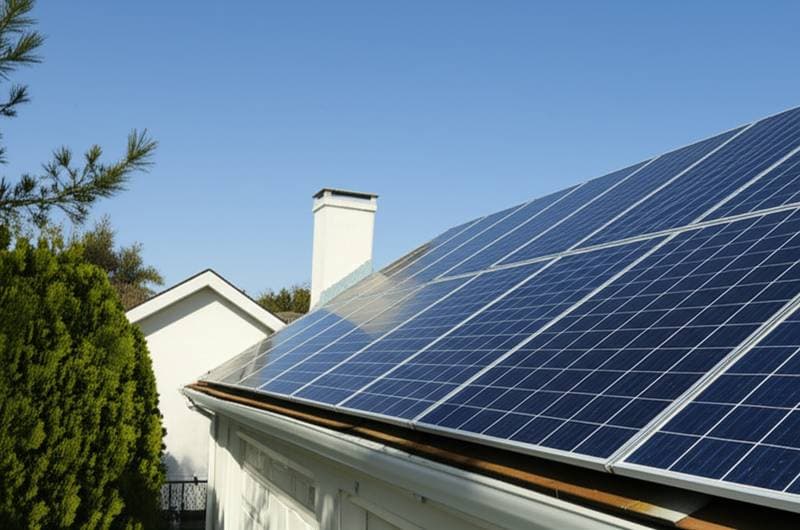What 2025 Holds for Ground-Mounted Solar Costs and Permits
Ground-mounted solar systems attract homeowners with available land but limited roof space. Many individuals question if the upcoming year will introduce elevated installation expenses or stricter permit regulations. Positive developments indicate stability in both areas. Efficiency advancements offset persistent material costs, and permitting simplifications balance overall project expenses.
Why Ground-Mounted Solar Costs Are Changing
Ground-mounted installations differ from rooftop setups in their structural demands and labor requirements. These systems necessitate posts, racking components, and occasional trenching for wiring, which contribute to higher expenses. However, they benefit from superior airflow and precise sun orientation, which enhance energy production.
Material costs have varied due to supply chain challenges and international demand. The cost per installed watt shows consistent progress toward stability. National averages for ground systems range from 2.70 to 3.50 dollars per watt prior to incentives. Local installers in various regions note that small residential setups frequently approach the lower range, particularly with favorable soil and minimal excavation needs.
Understanding the Cost Breakdown
A ground-mounted solar system consists of three primary cost categories.
- Hardware encompasses solar panels, inverters, and mounting racks.
- Labor and site work covers trenching, concrete footings, and electrical connections.
- Soft costs involve permits, design reviews, and utility interconnection fees.
For a standard 7-kilowatt system at an average of 3 dollars per watt, the pre-incentive price totals approximately 21,000 dollars. Application of the 30 percent federal tax credit reduces the net cost to around 14,700 dollars.
Annual energy output varies by sunlight exposure. In the Philadelphia region, a properly oriented system generates about 1,300 kilowatt-hours per kilowatt yearly. This results in roughly 9,100 kilowatt-hours per year for a 7-kilowatt array. At a utility rate of 18 cents per kilowatt-hour, the annual savings amount to approximately 1,640 dollars. This pace yields a payback period of about nine years, excluding additional state incentives.
Permit Requirements Are Evolving
Local solar permits previously posed significant obstacles through multiple review cycles, extended timelines, and variable inspection criteria. These challenges are diminishing nationwide.
Municipalities increasingly implement online portals and uniform checklists to expedite solar permitting. Certain cities now approve residential permits within one day, provided submissions satisfy structural and electrical codes. Ground-mounted projects demand site plans and zoning verification, but digital processes eliminate paper-based delays.
In Pennsylvania, multiple counties utilize template-driven plan reviews to accelerate decisions. Homeowners submitting detailed diagrams of array configurations, trench paths, and property line setbacks experience reduced processing times. These changes not only shorten waits but also decrease soft costs by several hundred dollars per installation.
How Labor and Site Factors Influence Cost
Soil composition, terrain slope, and site access exert the greatest impact on total expenses. Rocky or clay-rich ground often requires specialized drilling tools or concrete anchors, increasing outlays.
Level, unobstructed land proves more economical, as crews can employ driven posts rather than poured foundations. Consider a 12-panel array in two rows using direct-driven steel posts: labor costs might total 2,500 dollars. On sloped land necessitating grading and concrete piers, the same setup could exceed 4,000 dollars in labor. This additional 1,500 dollars may prolong the payback by almost one year, assuming stable utility rates.
Incentives and Utility Rules
The federal clean energy tax credit offers substantial aid to homeowners. Paired with state rebates or performance-based payments, these measures can lower initial costs by 30 percent or greater.
Utilities in some areas provide simplified net billing options, crediting exported solar power against future consumption. Time-of-use pricing further influences returns: lower daytime rates emphasize the value of self-consumption over exports. Smart inverters and battery storage optimize output for peak periods. While batteries increase upfront investment, they enhance reliability and accelerate payback in regions with tiered rates.
Expected Trends for the Coming Year
Industry analysts anticipate slight declines in panel and inverter prices as production scales up. Steel-dependent racking may hold steady amid material constraints. Regional labor shortages could maintain installation fees at current levels.
Permitting enhancements will likely persist, with more municipalities deploying automated tools to identify incomplete submissions upfront. Such systems minimize revisions, easing burdens on installers and owners alike.
The net effect points to stable average pricing, with modest savings for projects leveraging efficient layouts and online approvals. Proactive homeowners who obtain site surveys and electrical evaluations in advance position themselves for swift progress when new incentive programs launch.
Long-Term Value and Maintenance
Ground-mounted arrays endure comparably to rooftop counterparts, spanning 25 years or longer. Their elevated accessibility simplifies upkeep, preserving optimal output.
Effective maintenance follows three key practices.
- Visual inspection of wiring, connectors, and rack hardware twice annually.
- Panel cleaning using water or mild soap to remove dust and debris.
- Performance monitoring via inverter applications to detect efficiency drops.
Reputable installers provide 10-year workmanship warranties and extended service options. Trimming surrounding vegetation avoids shading and deters pests.
Practical Steps for Homeowners
To initiate a ground-mounted solar project, consider these preparations.
- Verify local zoning for setback requirements and array height limits.
- Obtain quotes from at least two installers to evaluate equipment and labor proposals.
- Inquire about trench specifications, conduit safeguards, and scalability options.
- Ensure the inverter complies with utility interconnection protocols.
- Examine warranties for panels and mounting components.
After completion, register the system with the utility to track credits and log production data accurately.
FAQ
Do ground-mounted solar systems produce more power than rooftop systems?
Yes, in many cases, due to optimal tilt angles and reduced heat buildup, which elevate efficiency.
Are permits harder to get for ground-mounted arrays?
They involve additional documentation, yet current online systems and standardized processes expedite approvals.
How much space is needed for a typical residential ground system?
A 7-kilowatt setup generally requires 500 to 600 square feet of unobstructed area.
Can a homeowner install the system without a professional?
DIY installation is feasible but discouraged, as trenching, wiring, and grounding demand adherence to safety codes.
